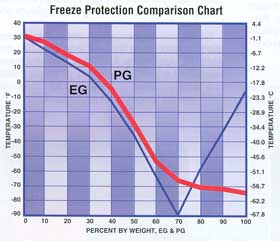Originally Posted By: Al
Heat transfer wise it doesn't matter whether you use 100% water or 100% coolant. I know it seems counter intuitive..the only thing water does is hold more btu's. This means the temp will rise slower. The coolant to air transfer surface in the radiator is the main facter affecting engine steady state temperature.
We wrote a Fortran IV program on that subject when I was in engineering school almost 50 years ago.
That's not entirely true and you don't need a computer program.
Without writing the equations, the rise of the coolant temperature between water inlet and outlet of the engine is proportional to the heat generated by the engine and inversely proportional to the heat capacity of the coolant. So, if the heat capacity of the coolant was infinite, the coolant temperature would be the same at the inlet and outlet. Since this is not the case and water has about 80% more heat capacity than antifreeze [1.00 kcal/(kg.C) vs. ~ 0.56 kcal/(kg.C)], that means the inlet and outlet temperature difference will be about 80% higher -- almost twice!
However, you are right that the average coolant temperature (between inlet and outlet) will be the same. However, do you really want to raise the temperature gradient in your engine and radiator by a factor of two? This could strain both the engine and radiator, as well as your hoses.
Heat transfer wise it doesn't matter whether you use 100% water or 100% coolant. I know it seems counter intuitive..the only thing water does is hold more btu's. This means the temp will rise slower. The coolant to air transfer surface in the radiator is the main facter affecting engine steady state temperature.
We wrote a Fortran IV program on that subject when I was in engineering school almost 50 years ago.
That's not entirely true and you don't need a computer program.
Without writing the equations, the rise of the coolant temperature between water inlet and outlet of the engine is proportional to the heat generated by the engine and inversely proportional to the heat capacity of the coolant. So, if the heat capacity of the coolant was infinite, the coolant temperature would be the same at the inlet and outlet. Since this is not the case and water has about 80% more heat capacity than antifreeze [1.00 kcal/(kg.C) vs. ~ 0.56 kcal/(kg.C)], that means the inlet and outlet temperature difference will be about 80% higher -- almost twice!
However, you are right that the average coolant temperature (between inlet and outlet) will be the same. However, do you really want to raise the temperature gradient in your engine and radiator by a factor of two? This could strain both the engine and radiator, as well as your hoses.





